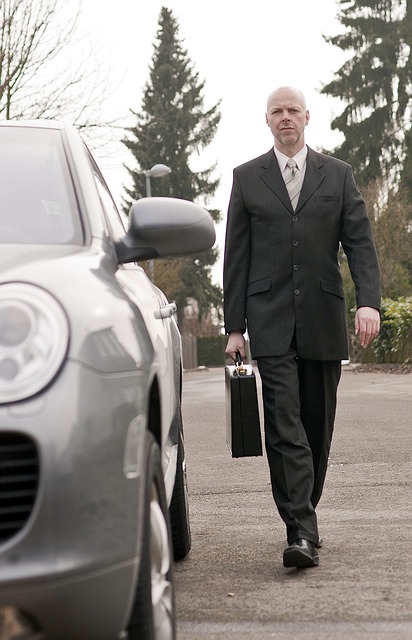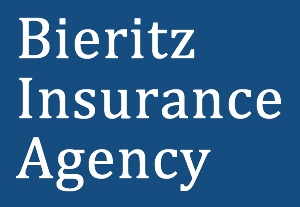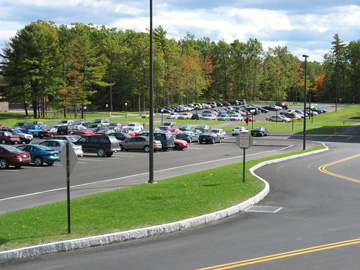Do you need to purchase extra Rental Car Insurance on your trip?
 Summer vacation travel season is here! If you are planning on heading out of town and using a rental car for your trip, you might find some of the information here helpful.
Summer vacation travel season is here! If you are planning on heading out of town and using a rental car for your trip, you might find some of the information here helpful.
Typically, when you are renting a car while on a personal vacation, your regular auto insurance policy will cover you for most of your needs. If you are traveling for business, your personal auto policy will not cover damage if you are renting for a business trip. If you have insurance for auto, renter or homeowner, you are likely already covered for liability, personal accident and personal effects coverage. The only coverage you might consider adding is additional collision damage insurance for a rental car. You can purchase this coverage to also include loss of use charges should a vehicle need to be repaired after an incident. This coverage can often be purchased through your private insurance provider for a minimal daily charge – far less than the upsell through a car rental agency.
If you are not covered by a private policy, you may be able to add rental car coverage through your major credit card account. Check with Visa, Mastercard, Discover and American Express through the phone numbers on the back of your cards. To receive the coverage through a credit card company, you must charge the entire rental on the credit card and decline the supplemental collision damage coverage offered by the rental company. It is important to note that you can’t have both. Coverage through the credit card company may have additional restrictions based on the length of the rental term, the type of vehicle you are renting, or what country you are renting from.
Another option is to purchase special travel insurance for your trip, to help cover your trip investment. Travel insurance helps to cover your trip investment if you have flight cancellations due to illness, injuries, weather incidents or other travel related issues. It can help you replace lost baggage, theft of property, tour operator bankruptcy, and more. Travel insurance also has the option for adding collision coverage for a rental vehicle as part of your vacation insurance package.
What rental car insurance can do is protect you from a surcharge on your policy premium for a claim on an accident when driving a rental car. It also can protect you from ‘loss of use’ charges when the rental car has to be off the road for repairs. If you are declining additional coverage, always make sure you take the time to read the fine print on your rental contract before signing for your vehicle, and make sure that it indicates that you are declining the additional insurance.
If you have any questions, check with our team at Bieritz Agency before your trip so we can help to advise you on what makes the most sense for you. We offer two convenient locations in Cooperstown and Morris.


 If your child is leaving home to attend college, make sure you check with your auto insurance
If your child is leaving home to attend college, make sure you check with your auto insurance From the student’s perspective, a driver’s license represents some very big things: freedom (the ability to go where you want, when you want); independence (not having to depend on parents or others to get there); responsibility (for ones’ self, for passengers, for a car, for gas, for others on the roadways). The driver’s license is one of the milestones in the transition from youth to adult.
From the student’s perspective, a driver’s license represents some very big things: freedom (the ability to go where you want, when you want); independence (not having to depend on parents or others to get there); responsibility (for ones’ self, for passengers, for a car, for gas, for others on the roadways). The driver’s license is one of the milestones in the transition from youth to adult. During the months of November and December our local populations of deer are migrating and mating, resulting in a dramatic increase of movement. More deer collisions occur during these months than at any other time of year, so we urge drivers to be especially careful, particularly in the early morning and evening hours (times when many people are commuting to and from work).
During the months of November and December our local populations of deer are migrating and mating, resulting in a dramatic increase of movement. More deer collisions occur during these months than at any other time of year, so we urge drivers to be especially careful, particularly in the early morning and evening hours (times when many people are commuting to and from work).
 June is National Safety Month, so our team has decided to provide resources from the National Safety Council to help improve some general safety practices for all our friends and clients.
June is National Safety Month, so our team has decided to provide resources from the National Safety Council to help improve some general safety practices for all our friends and clients.

 In recognition of May as Motorcycle Safety Awareness Month, Bieritz Insurance Agency would like to reach out to all of our Otsego County motorists and motorcyclists alike, encouraging them to “share the road” in order to reduce motorcycle deaths and injuries. Motorcycles are among the smallest and most vulnerable vehicles on the road, putting riders at greater risk of death and serious injury in a crash. In fact, according to the Department of Transportation’s National Highway Traffic Safety Administration (NHTSA), motorcyclists are 30 times more likely than occupants of cars to die in a crash, and 5 times more likely to be injured.
In recognition of May as Motorcycle Safety Awareness Month, Bieritz Insurance Agency would like to reach out to all of our Otsego County motorists and motorcyclists alike, encouraging them to “share the road” in order to reduce motorcycle deaths and injuries. Motorcycles are among the smallest and most vulnerable vehicles on the road, putting riders at greater risk of death and serious injury in a crash. In fact, according to the Department of Transportation’s National Highway Traffic Safety Administration (NHTSA), motorcyclists are 30 times more likely than occupants of cars to die in a crash, and 5 times more likely to be injured. Night Vision System
Night Vision System